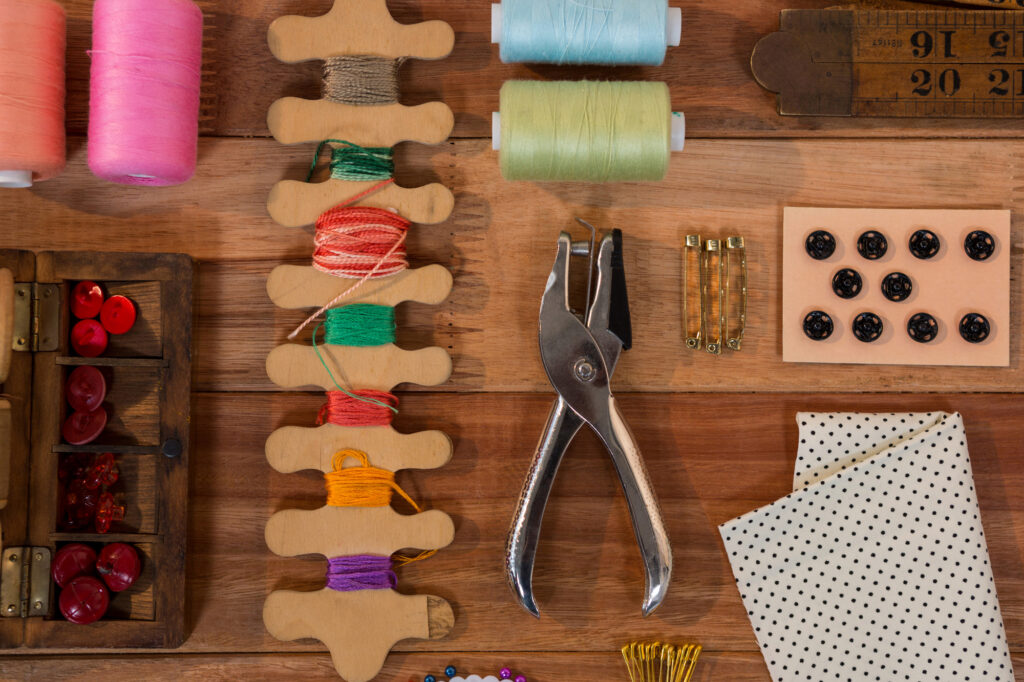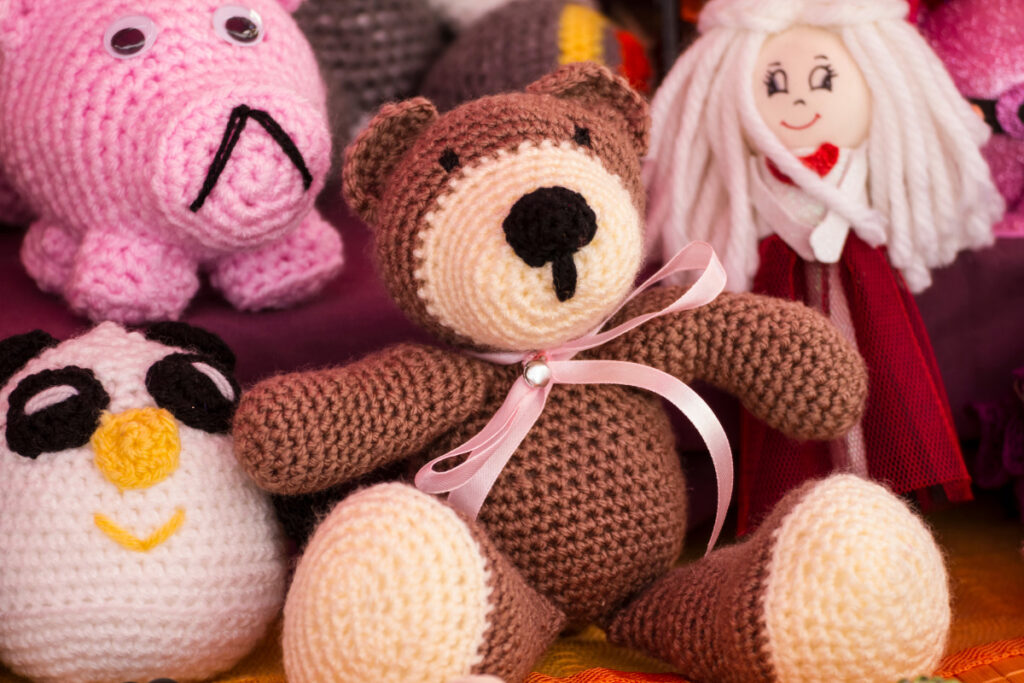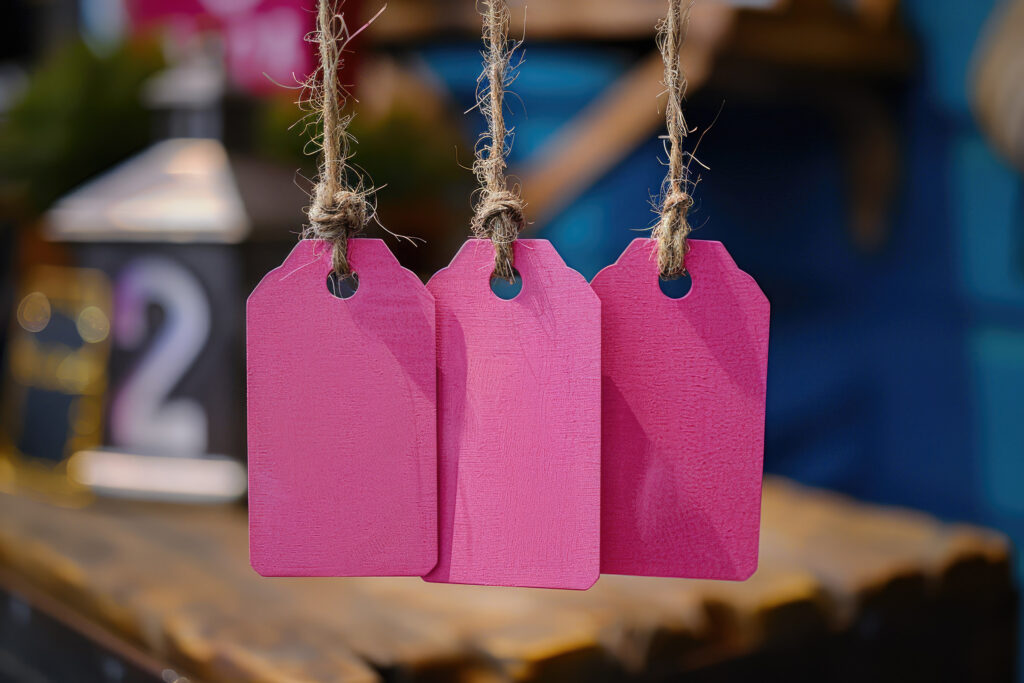For sewists, a craft fair is like an interview and a party wrapped in a bow. On one hand, craft fairs can be nerve-wracking — you spend months preparing for them and still can’t always predict what kind of accidents may happen. On the other hand, craft fairs can be the perfect opportunity to meet new people, sell your sewing projects, or even build your network.
Whether you’re a beginner sewer who is figuring out how to turn sewing projects like homemade clothes into high-quality items or you’re a sewing veteran, there is always more you can learn about craft fairs. With that in mind, let’s dive into the beautiful world of craft fairs and how you can use Arrow Sewing furniture to enhance your experience.
Getting Started: Understanding Craft Fair Culture
Most communities, large or small, host craft fairs from time to time. These events are great opportunities for sewists to earn extra cash, connect with other sewists, gain inspiration, and grow their sewing businesses.
Craft fairs vary widely in scale and scope, ranging from small local community markets to large-scale artisan expos. Local markets are often smaller, and attendants are often fellow sewists and other community members. This may be a great place to start if you are a beginner sewist considering building your hobby into a business. You’ll often receive great feedback from other sewists and learn tips to try on your upcoming projects.
Larger expos, on the other hand, are rarer and draw in attendees from across the country. These events are perfect for sewists who already have a business and want to broaden their market and network with other aspiring sewist entrepreneurs. The more you prepare, the less stress you’ll have during the event.
Preparing for Your First Craft Fair
Sewists will plan out for a craft fair months in advance to provide enough inventory for the big day. Let’s look at a couple of ways you should prepare in advance.
Plan Out Your Product
When planning for a craft fair, you shouldn’t simply pick your latest products and throw them in a bag. All your products will reflect your brand and work as an artisan. As such, each product should match a theme that represents your brand but still be diverse enough to interest customers with varying tastes.
Your products should also be simple enough to easily duplicate across multiple items but complicated enough to show off your sewing skills. It’s a tricky balancing act, but in doing so, you can show your customers your quality craftsmanship that stands out from other booths.

Essential Items to Bring to a Craft Fair
At a minimum, you should bring your products to a craft fair, but we recommend you also bring other items, including:
- Emergency tools: Accidents happen. Sometimes, a loose thread will ruin a product, so it’s important to pack an emergency set of sewing supplies, such as a spare set of needles, fabric, scissors, thread, and other supplies, to address any issue quickly.
- Cutting mats: It’s not uncommon for customers to request commissions. You might run out of product items, or they may be interested in something similar but have something specific in mind they wouldn’t mind paying extra for. In these circumstances, you can always have spare fabric and cutting mats available to quickly show the customer and help them envision their commission. This also helps you get a head start on the project.
- Chairs: At craft fairs, you’ll be sitting most of the time. Bring a comfortable and ergonomic chair with you to avoid any aches and pains associated with sitting for long periods.
- Storage: You don’t want all of your items displayed on the table, as this can create a cluttered look. Instead, bring storage cabinets and other items to hold your inventory.
- Business cards: Ideally, you’ll attract customers who want to continue supporting your work. In this case, you can hand out business cards with your contact information and social media so they can reach out for future purchases. Business cards can also be great for networking opportunities with other sewists.
Ultimately, these items allow you to stay prepared for anything. Plus, they help your booth look well-stocked and organized, drawing in customers and making you feel more comfortable during the event.

Pricing Your Items
Calculating the cost of all your items can be tricky for a variety of reasons. On the one hand, you want the price point to be attainable for customers, but you also want to be able to compensate yourself for all of your work. As a general rule, you can calculate the price of each product by considering the following:
- Materials: Calculate the materials needed for each item, including the fabric, thread, and embellishments.
- Time spent: Assign a reasonable wage for yourself and multiply it by how long it took to make each item. Don’t sell yourself short, either. You deserve compensation for all your hard work!
- Market pricing: Research the pricing of other sewists and their projects. If your products are similar in quality but more expensive, customers may look to your competition instead.
- Perceived value: If you prioritize high-quality craftsmanship, that can work in your favor when pricing your items, as your customers will perceive it as high-value.
Once you figure out the baseline for each product based on these factors, you need to find a way to display the cost for each item, either using paper tags or display signs. You can also draw in customers by creating limited deals or discounts on certain items. This may incentivize them to continue buying from you in the future and even pursue other, more expensive items.
Making the Most of the Event
Even if you’ve done everything you can to prepare, your experience can go to the wayside if you hide behind your display the whole time. How you act — with customers and other artisans — at the craft fair can determine your success.
Engaging with Customers
One of the best ways to sell your product effectively is to engage with your customers. This can vary from person to person because no one wants to hear a pitch from a relentless salesperson. Instead, make your interactions natural to who you are. Tell the story of how you crafted each item to show how much work you put into each product. Encourage questions, and more than anything, greet each customer with a smile and a welcoming demeanor.
If you’re feeling particularly flashy, you can also provide a live demonstration and workshop to showcase your products. For example, if you make handmade bowl koozies, you can serve warm bowls of soup and show how effectively your koozies protect your hands from the heat while eating. Ultimately, cater your interactions around your product and your brand.
Networking at Craft Fairs
Craft fairs aren’t all about the customers, though. If anything, your interactions with fellow sewists and artisans may hold the most value to you after the fact. In these interactions, you can ask for feedback on your wares and discuss collaboration opportunities. Collaborations are an excellent way for fellow sewists to promote two artists simultaneously, saving you time and boosting your collective sales. More than anything, these interactions can start a blossoming friendship as you bond over your collective love for sewing.
To maintain contact with your connections at craft fairs, you can connect on social media, send thank-you notes for any advice or support you received, or even propose a meeting in person to discuss collaborations. Doing so will open up doors for your professional sewing journey.

After the Fair: Follow-ups and Feedback
Every craft fair shouldn’t exist in a vacuum. You should use it as an opportunity to learn and propel your craft further. For example, you can display feedback surveys for your customers to fill out. In them, you can ask a variety of questions, such as how your customer service was, what they thought of the products, and how you can improve your displays.
You can also use these forms to send promotional emails or newsletters to further customer engagement. No matter what avenue you use to receive feedback, it’s essential to use it to learn and grow.
Craft Fair Display Ideas and Resources
Now that we’ve covered basic etiquette, let’s move on to arguably the most important aspect of craft fairs: the display itself. Although many fairs will provide display tables and booths for you, you might have to bring a table for yourself. For convenience’s sake, bringing a table that’s big enough to display your items but is still portable to bring to and fro is essential. Luckily, many sewing tables are portable, so you don’t have to worry about buying an extra table for the event if you already have this functionality.
With that in mind, let’s cover some tips for creating your display!
Effective Layout and Design
When creating a table and booth layout, you must think from a functional and creative perspective. Ideally, your table should work with the natural flow of customers, with your most impressive products in the middle of your table or one side and your checkout on the other side — all while being accessible to any customers. Your table and booth should also be unique to catch customers’ eyes. Here are some other resources and tips when planning out your booth:
- CraftProfessional booth design templates: Here, you can find a variety of templates for designing your table that can help facilitate your customers’ flow while also featuring your items.
- MadeUrban layout tips: This article provides tips on building your table and booth by breaking down your table into zones. Each zone serves a different purpose in satisfying the customer experience.
- BlueSusanmakes booth guide: Most importantly, this guide instructs on how to effectively use every inch of space in your booth, including vertical storage and hooks to hang products that will be one eye level for most customers.
Your booth should be a creative extension of your work. To match your brand’s aesthetic, don’t be afraid to bring decorations that echo the theme of your products. Although seemingly small, this can complete the customer experience.
Attention-Grabbing Signage and Branding
Even if you have flashy products, if you don’t have clear displays and signs that grab the eyes of your customers, many people will turn away due to confusion or lack of interest. These signs explain each item and can discuss your brand, story, and potential promotional messages.
Like every other decoration in your booth, your displays should match the overall aesthetic of your products. If you’re working on a budget, you can always create these displays yourself, but many companies also specialize in building aesthetically pleasing signs and displays for you, so you can focus more on the craft you know best.
Beyond that, here are some resources you can look into when building your signs:
- CraftProfessional printable signs: If you’re not confident in your handwriting or can’t think of how to format your signs, you can always use some of these printable signs.
- ConquestGraphics sign ideas: When designing your booth, think beyond a straightforward sign. This article discusses various types of signs you can incorporate to help direct customers your way.
- MadeUrban display tips: This guide covers every detail around your signs, from color and contrast to proper lighting. Although not all of these details focus on the signs, they can help accentuate them and your booth.
As you can see, how you go about the craft fair depends on your wares, the fair in question, and even your personality. Even if you don’t have as successful of a craft fair, don’t lose heart. There is always an opportunity to grow, and look forward to the next one.
So once you close down your display, keep your head up. You’ll have plenty more time to develop your products even further with the help of new tips and sewing connections. Look to Arrow Sewing Furniture to invest more in your sewing career and start developing ideas for your next adventure at the craft fair.

FAQs About Craft Fairs as a Sewist
How Do I Choose the Right Craft Fair for My Products?
Pick a craft fair where the people will likely enjoy your products. Check the fair’s location and size, and read reviews to see if other sellers did well there. These steps ensure that it’s a good fit for you.
What Are the Best Craft Fair Display Ideas to Attract Customers?
Set up your booth to catch people’s attention with items at different heights and a clear sign. Make sure everything is easy to see, and consider showing how your products work to draw people in.
How Can I Prepare Myself for Common Craft Fair Challenges?
Get ready for any weather, have extra ways to take payments, and plan for busy times. Keeping your booth protected from rain or wind and handling sales smoothly are essential for a good day.
What Should I Do If I Don’t Sell Much at My First Craft Fair?
See it as a chance to learn. Ask people what they think about your prices and products, and use what you learn to do better next time. Talking to other sellers can also give you good tips.
Is It Important to Have a Mailing List Signup at My Booth?
Yes, getting email addresses at your booth lets you keep in touch with people who liked your booth. Give a small reward for signing up, like a discount. This list helps you tell people about new stuff later on.
How Much Inventory Should I Bring to a Craft Fair?
Take enough products to give choices but not so many that you have a lot left over. Watch what sells best and adjust for next time.
Can I Collaborate with Other Vendors at Craft Fairs?
Working with other sellers can help you save money and bring more people to your booth. Share space or team up with someone who sells things that go well with yours. Make sure it’s a good match for your style and audience.
